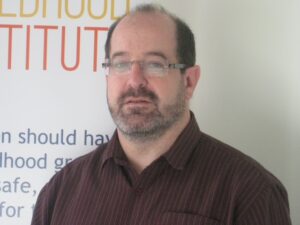
UK Grocery Inflation Eases to 5% in August 2025
UK grocery inflation eases to 5% in August 2025, showing slight relief. Consumers shift to value shopping as branded items rise and dining out declines.

In a study published in the Journal of Materials Chemistry A, researchers led by Professor Hongxia Wang in collaboration with Assoc. Prof. Prashant Sonar of the Center for Materials Science at QUT showed that carbon nanodots could be used to improve the efficiency of perovskite solar cells.
The Perovskites solar cells, a relatively new photovoltaic technology, are considered the best candidate for PV to supply cheap, highly efficient solar electricity in the coming years. They have proven to be just as effective in power conversion efficiency as current commercial monocrystalline silicon solar cells. Still, an obstacle for researchers in this field is to make the technology cheaper and more stable.
Unlike silicon cells, they are created from a blend that is easy to manufacture. Because they are flexible, they can be used in scenarios such as backpacks that charge your devices on the go, solar-powered clothing, and even tents that can serve as stand-alone sources.
Last year, Associate Professor Prashant Sonar led the research team, including Amandip Singh Panu, a researcher at the Center for Materials Science, that turned hair scraps into carbon nanodots by breaking hairs and burning them at 240 degrees Celsius. In this study, researchers showed that carbon dots could be turned into flexible displays that can be used in future smart devices.
After adding solutions for carbon dots in the perovskite production process, the team of Professor Wang discovered carbon dots forming a wave-like perovskite layer where the carbon dots surround the perovskite crystals.
Professor Wang has been studying advanced solar cells for about 20 years and has been working with Perovskites since they were invented a decade ago. The main goal is to develop cost-effective, stable photovoltaic materials and devices to help solve the world’s energy issue. “Our final target is to make solar electricity cheaper, easier to access, longer-lasting, and to make PV devices lightweight because current solar cells are very heavy,” Professor Wang stated.
The International Space Station is powered by four solar fields that can generate up to 120 kW of electricity. But one of the disadvantages of current photovoltaic technology is the weight of the payload that will get them there.

UK grocery inflation eases to 5% in August 2025, showing slight relief. Consumers shift to value shopping as branded items rise and dining out declines.

Zelenskiy–Trump summit boosts markets as equities rise and the dollar steadies amid growing peace hopes. Investors await Fed insights at Jackson Hole for further direction.

Statistics Canada is investigating an accidental early release of June manufacturing data, raising concerns over data governance and market integrity. The agency has launched an internal review to strengthen its publishing protocols.

Investor confidence in France is deteriorating as political gridlock and budgetary uncertainty deepen.

June 09, 2025: Canada will host the 50th G7 Summit from June 15 to 17 in Kananaskis, Alberta, amid heightened global tensions and economic rifts.

May 30, 2025: Canada’s economy expanded at an annualized rate of 2.2% in the first quarter of 2025, outperforming the market forecast of 1.7%.

At seventeen, Professor Richard Rose stepped into a world few adults dare to navigate: the world of children fractured by trauma. He wasn’t a clinician then, nor a scholar. He was simply a young man with a heart tuned to the quiet ache of others.

Following a distinguished Law Enforcement career Joe McGee founded The Securitatem Group to provide contemporary global operational specialist security and specialist security training products and services for private clients, corporate organisations, and Government bodies. They deliver a wide range of services, including complete end-to-end protection packages, close protection, residential security, protection drivers, and online and physical installations. They provide covert and overt investigations and specialist surveillance services with a Broad range of weapons and tactical-based training, including conflict management, risk and threat management, tactical training, tactical medicine, and command and control training.

Jay Wright, CEO and Co-Owner of Virgin Wines infectious energy, enthusiasm, passion and drive has been instrumental in creating an environment that encourages talent to thrive and a culture that puts the customer at the very heart of every decision-making process.

Fabio de Concilio is the visionary CEO & Chairman of the Board at Farmacosmo, a leading organization dedicated to mental health and community support services. With a deep commitment to identifying and meeting customer needs, Fabio ensures that high standards are maintained across the board.

Leave us a message
Subscribe
Fill the form our team will contact you
Advertise with us
Fill the form our team will contact you